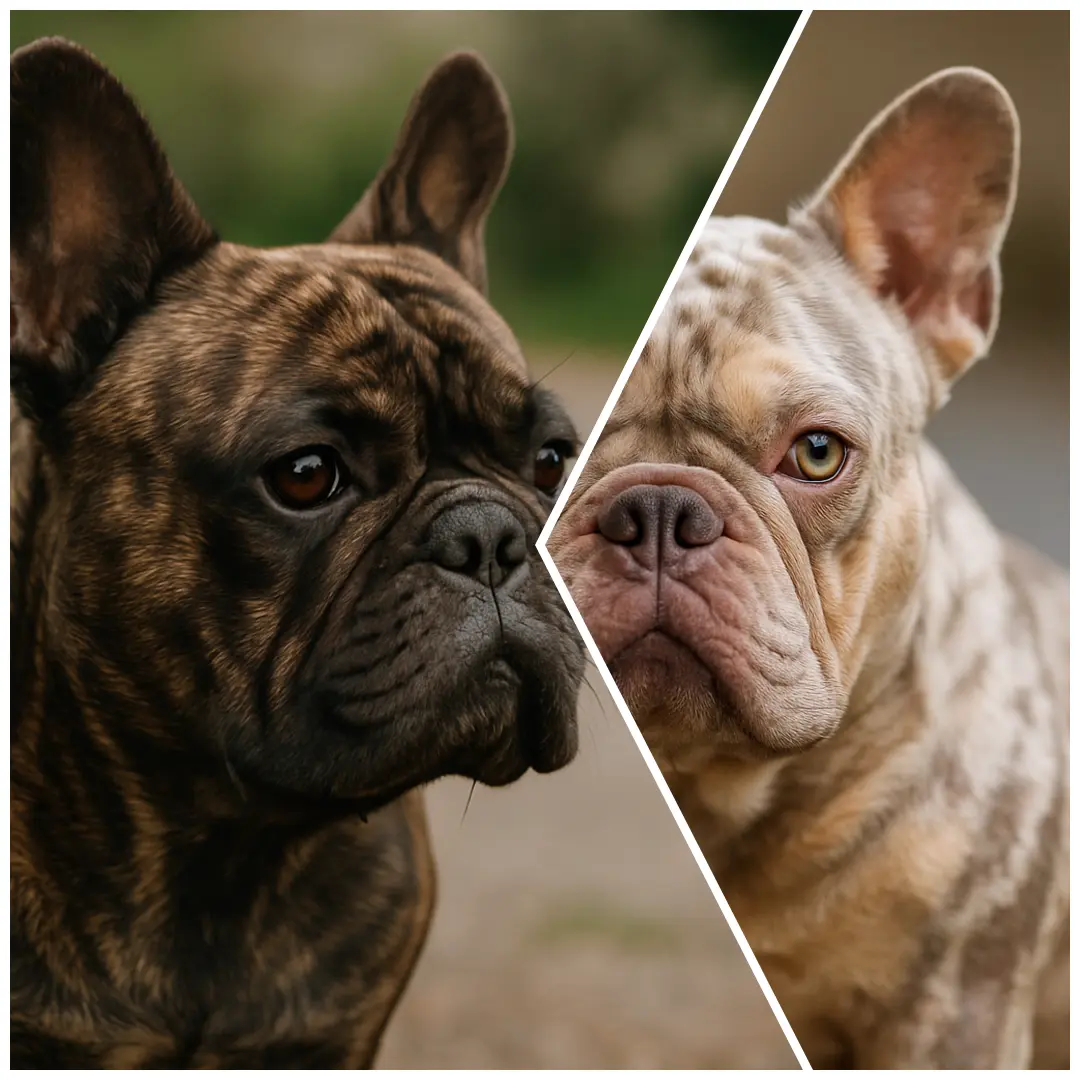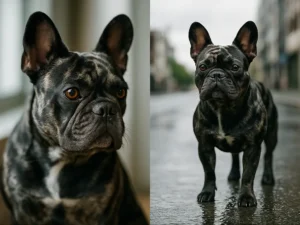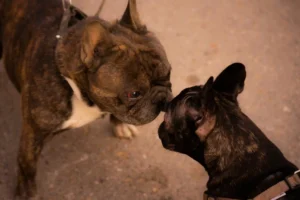Brief Answer in a Few Words
In short, merle displays speckled spots on a pale background, whereas brindle presents stripy markings on a uniform background. For a straightforward comparison keeping lilac fawn merle vs brindle clear for first-time buyers and photo-based searches read the article completel as it helps newcomers and provides image‑based searches to differentiate beween lilac‑fawn merle from brindle. (Veterinary Genetics Laboratory)
Pattern Basics in Simple Words
What “merle” looks like
Merle appears patchy or marbled, The lighter spots are usually blotchy, irregular, and uneven, never clean lines. They can look like clouds or broken pieces of the underlying color, because the diluted sections blend with shade, merle is most noticeable in bright, natural light or in outdoor photos where the contrast is clear. Owners often describe merle as “cloudy,” “broken,” or “marbled” rather than a solid solid or striped pattern. UC Davis explains merle as irregularly shaped, diluted sections on the coat—easy to spot once you know where to look. (Veterinary Genetics Laboratory)
What “brindle” looks like
Brindle looks like a series of dark “streaks” or “stripes” running over a lighter ground color, giving the bulldog a subtle, tiger‑like appearance. The Kennel Club describes brindle as a mix of darker and lighter hairs that creates a banded effect. On some dogs the stripes are bold; on others they are finer and softer, but still linear, not patchy. The result feels more like brush strokes than marbling or blotches. (thekennelclub.org.uk)
Fast Comparison Table
| Feature | Lilac/Fawn Merle | Brindle |
|---|---|---|
| Base look | Soft lilac or fawn tone | Fawn, black, or mixed bases |
| Pattern | Mottled patches, cloudy breaks | Linear striping over base |
| Photo tip | Look for uneven, washed areas | Look for lines around shoulders/ribs |
| Listing mix-ups | “brindle vs dapple (merle)” confusion in captions | Filters can mute stripes |
| Buyer note | Confirm exact label on papers | Match ad language to documents |
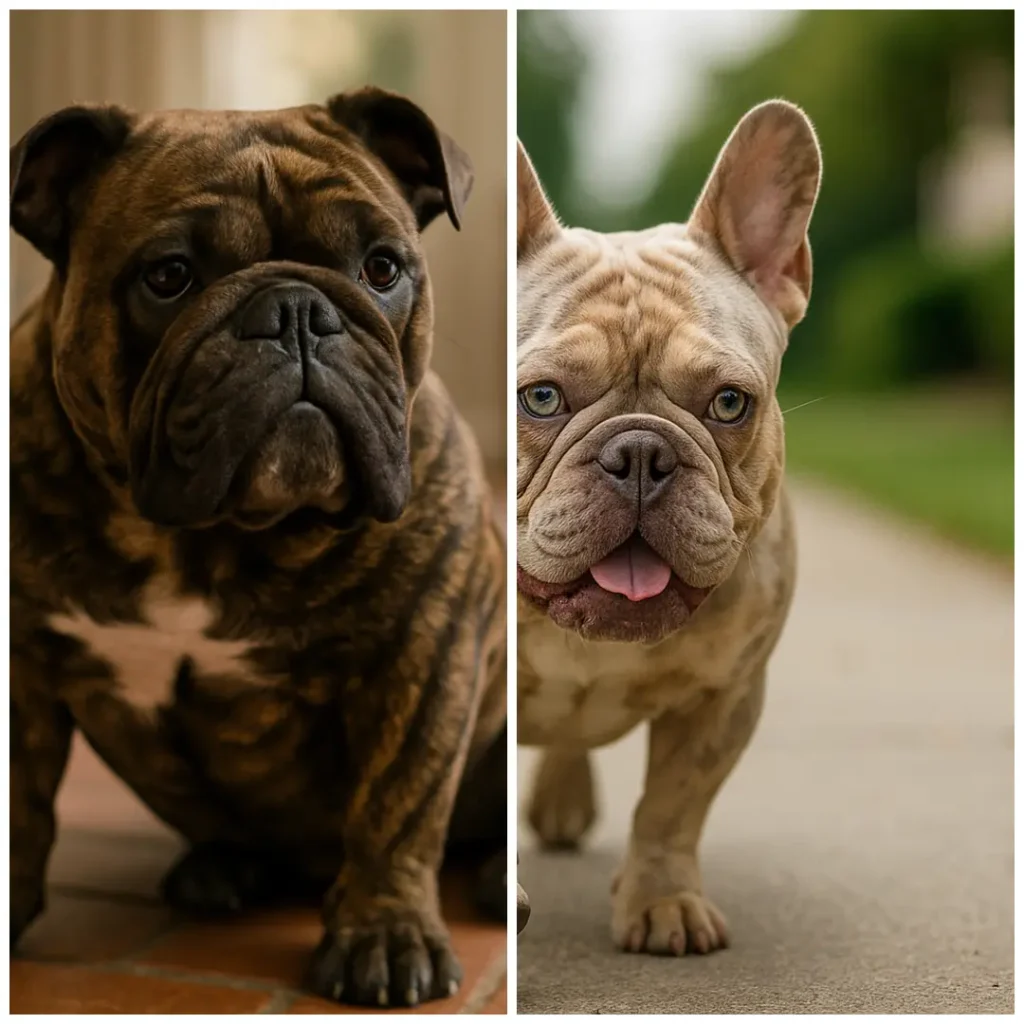
Color Names & Marketing Labels
How terms get stacked
Sellers often combine tone and pattern, e.g., lilac merle vs brindle or lilac fawn vs brindle, to describe both color family and pattern. In casual ads, “dapple” may be used for merle, which feeds the difference between merle and brindle debate online. When in doubt, request natural-light photos and a short note on how the color appears on paperwork. (thekennelclub.org.uk)
How to Recognize in Ads?
Typical ads might reference cryptic merle (a subtle pattern), isabella (a lilac‑ish) hues, or fawn (Ay) markings. These descriptors give a quick sense of color and visibility without delving into genetics. Treat them as handy cues for shade and prominence, not as detailed guidance. Clear photos taken from multiple angles remain the most effective way to convey the dog’s look to buyers. (Embarkvet)
Registration & Show Notes (non-technical)
Club websites determine the phrasing for show entries and the officially recognized colour lists. For instance, the UK French Bulldog standard lists brindle and fawn as acceptable colours, while many clubs address merle in separate sections or guidance documents. Cross-check “merle vs brindle dog coat” claims in ads with an up-to-date club page before planning shows or paperwork. (thekennelclub.org.uk)
Photo Checks & Listing Language
Where patterns appear most clearly
When assessing brindle versus merle, request outdoor photos that show the shoulders, ribs, and hips. Straight, continuous lines point to brindle, while irregular, broken patches indicate merle. If a caption mentions “merle vs. brindle,” review multiple angles and short video clips. Good natural lighting reduces ambiguity and keeps the distinction between merle and brindle obvious for new owners.
Paperwork wording to match
When an ad cites a merle versus a brindle coat, verify how the breeder will denote the color on the paperwork. Keep copies of the ad copy, invoices, and any club language you’ve looked at. If a seller refers to testing services, record the lab’s name for your records—consult the American Kennel Club (AKC) breed standards and resources from Embark Vet and similar sources for pattern details. (thekennelclub.org.uk)
Light Genetics Glossary
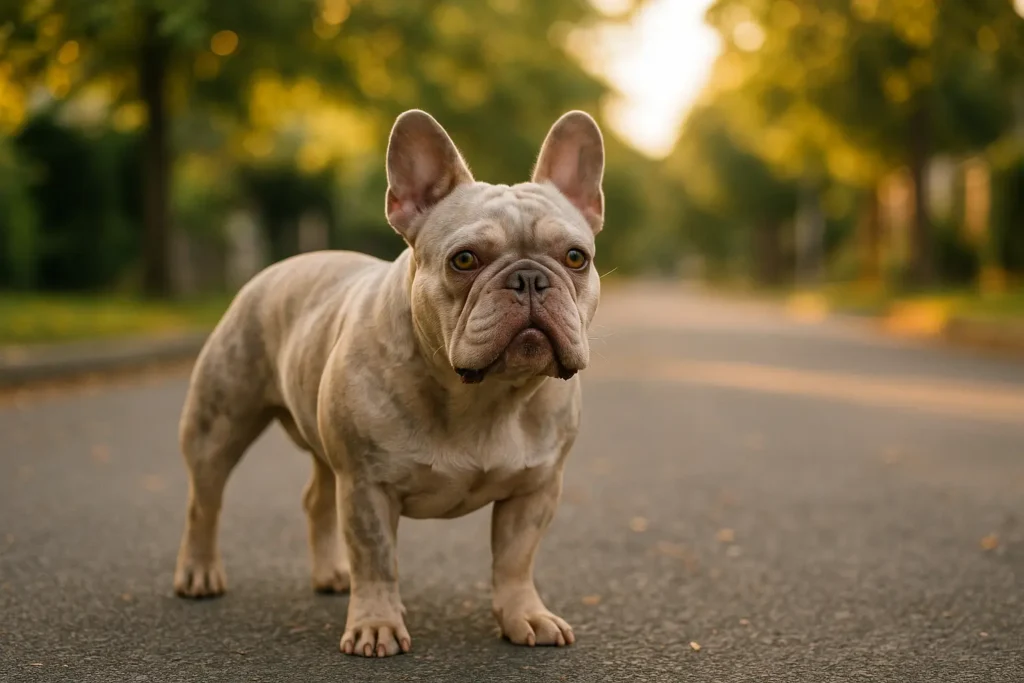
Buyers often encounter simple tags that outline color pathways and pattern visibility: M locus (merle), K locus (brindle), D locus (dilute), eumelanin, phaeomelanin, double merle, and hidden merle. View these as label terms used by testing services and breed listings. For straightforward overviews, consult the UC Davis Veterinary Genetics Laboratory and Embark Vet resources. (Veterinary Genetics Laboratory)
Laboratories & Resources Frequently Cited in Ads
A number of sellers mention genetic testing companies in their item descriptions, including UC Davis Veterinary Genetics Laboratory, Embark Vet, LABOKLIN / Labogen, and Animal Genetics. These sites primarily provide details on coat patterns, coloration, and related services. Consult them as reference material to learn how irregular coats differ from striped ones in everyday photos and videos. (Veterinary Genetics Laboratory)
FAQs
Is lilac fawn a merle?
Not always. “Lilac fawn” describes tone, while “merle” describes a patchy pattern. A dog can be lilac fawn without merle, or lilac fawn with merle. Photo angles and natural light help confirm what is most visible in daily life. (Veterinary Genetics Laboratory)
Can a dog be merle and brindle?
Yes— a dog can carry both merle and brindle markings, though the combination is relatively uncommon and often depends on the breed’s genetic allowances.
Is merle a color or a pattern?
Merle is a pattern term, not a base color. It changes how the coat looks by creating lighter patches beside normal areas, which is why it reads as marbled or cloudy rather than lined like brindle. (Veterinary Genetics Laboratory)
Which is rarer: merle or brindle?
Merle is generally the scarcer of the two, mainly because it occurs naturally in far fewer breeds and is often treated as a special‑interest color mutation. Brindle, by contrast, shows up in a wider range of dogs (especially many terriers, hounds and mixed‑breed lines) and is therefore encountered more frequently overall. That said, the exact rarity can still vary by breed and location, so if you’re looking at a specific breed’s market you’ll want to check the current listings for that breed to see which pattern is truly less common in that context.
Are merle French Bulldogs AKC recognized?
The American Kennel Club does not list merle as an approved color for French Bulldogs. The AKC breed standard currently recognizes fawn (including various shades of fawn), brindle and the “reverse brindle” pattern, along with a few specific markings; merle is absent from that list. (American Kennel Club)
Does merle affect fawn/brindle areas?
Yes—merle will often modify the look of a fawn or brindle base. The merle pattern can dilute or “wash out” those colors, especially where the merle spotting is most pronounced, so the coat may appear lighter or more muted in photos. Because lighting and angle can further change how the base shows up, it’s a good idea to compare several outdoor shots from different perspectives (or look at siblings from the same litter) to get a true sense of the dog’s underlying color.(Veterinary Genetics Laboratory)
What genes cause merle and brindle?
Many resources often mention M locus (merle) and K locus (brindle) as quick labels for pattern types. Readers can see plain overviews on UC Davis VGL and Embark pages if they want more background. (Veterinary Genetics Laboratory)
Which one is more expensive?
Lilac Fawn Merle is far more expensive than Brindle. Brindle is a common coat pattern, usually priced on the lower end for French Bulldogs. In contrast, Lilac Fawn Merle is rare and can cost is usually higher. The rarity of the color combination makes it much pricier.
Conclusion
If we put it simply, merle appears as a speckled, patchy pattern, while brindle shows up as striping. Verifying photos, using precise language, and keeping basic paperwork notes ensure smooth decisions—whether a listing reads merle vs. brindle or lilac merle vs. brindle. Refer to club guidelines for standards and brand assets for straightforward pattern explanations, then archive screenshots and invoices so the listing terminology aligns with the final documents.. (thekennelclub.org.uk)
References
- AKC – Merle in Dogs (plain explainer). (American Kennel Club)
- The Kennel Club (UK) – French Bulldog standard (brindle/fawn). (thekennelclub.org.uk)
- UC Davis Veterinary Genetics Laboratory – Merle overview. (Veterinary Genetics Laboratory)
- Embark Vet – Merle coat pattern testing & modifiers. (Embarkvet)
- The Kennel Club – Breed standards index. (thekennelclub.org.uk)
